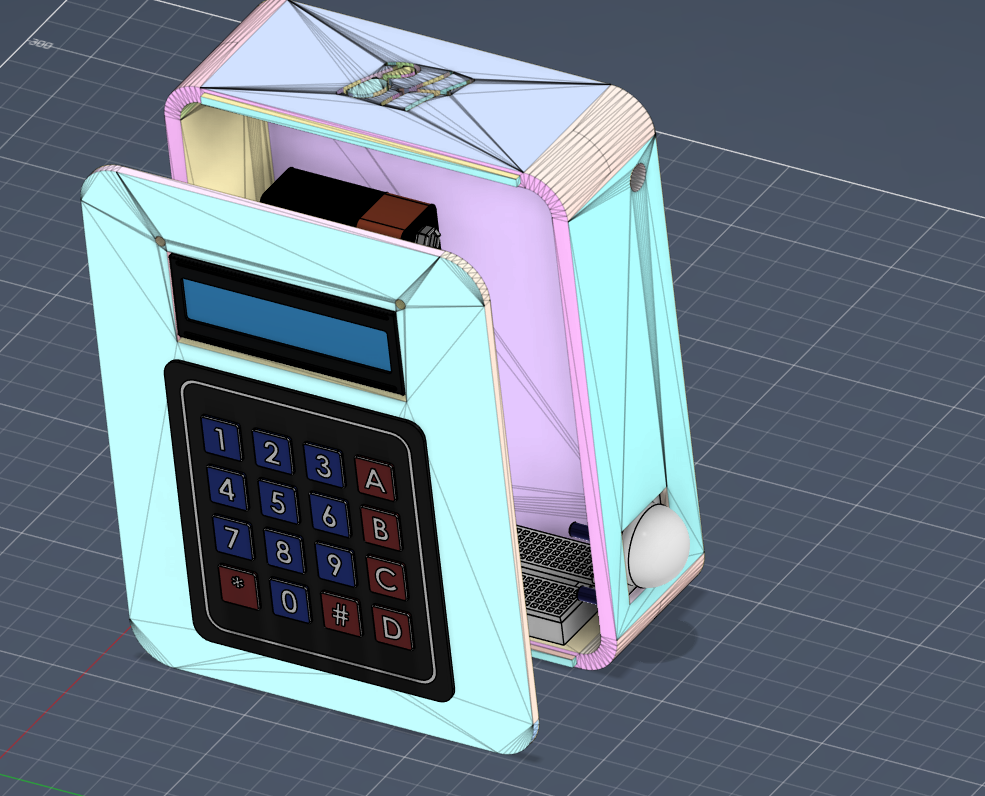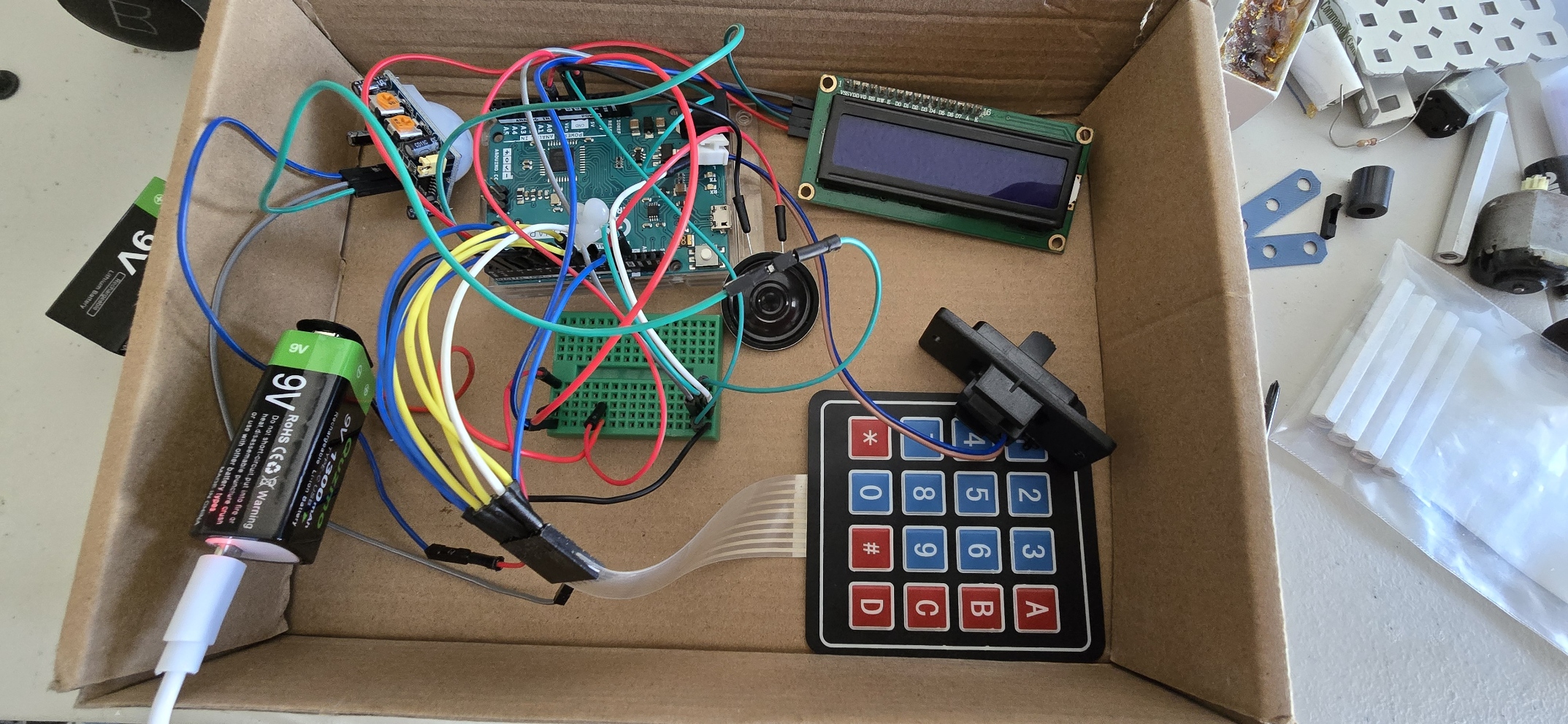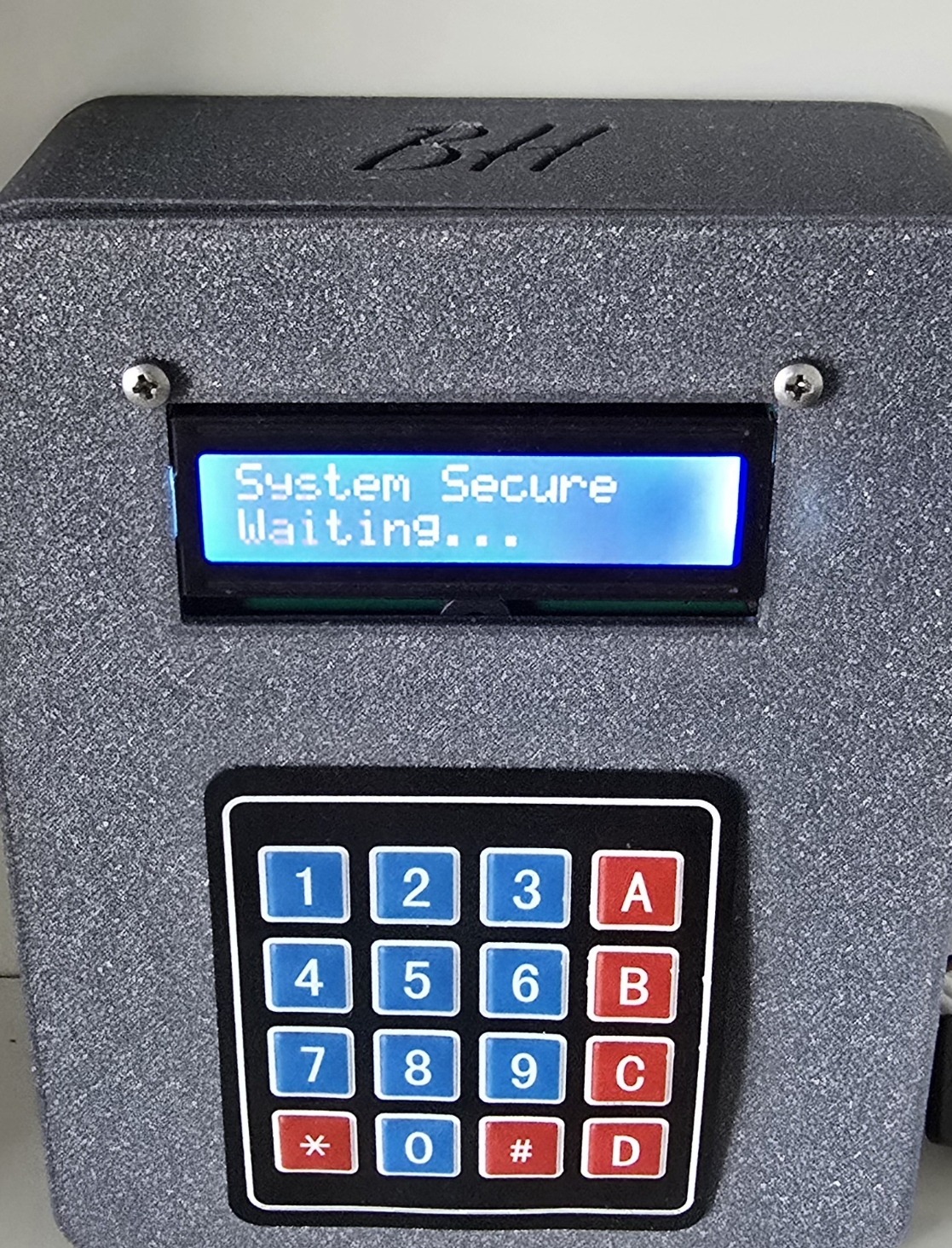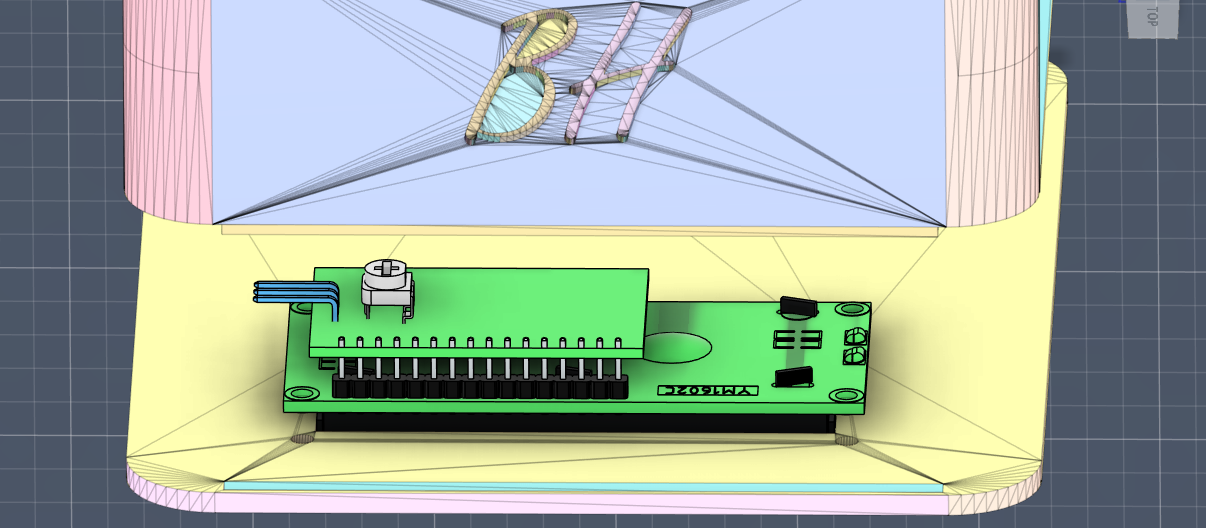Project Overview
I built a stand-alone keypad alarm that pairs an Arduino Leonardo with a 4 × 4 membrane keypad, 16 × 2 LCD, PIR motion sensor and piezo buzzer. When armed, the system watches for motion, sounds an alarm, and requires a PIN to disarm. A custom two-piece enclosure—modelled in Autodesk Fusion 360 and printed on my new Bambu Labs P1P—houses the electronics, giving the prototype a rugged, tamper-resistant feel.
Project Reflection
Building this alarm pushed me from breadboard prototypes to a fully packaged product. The steepest learning curve was designing a two-piece enclosure in Fusion 360: I had to iterate tolerances, add an internal lip, and place standoffs so the Leonardo, LCD, keypad, and PIR sensor all snapped in without stress. Each print on my brand-new Bambu Labs P1P revealed something to tweak—layer adhesion, wall thickness, or chamfers—so I fine-tuned nozzle temperatures, cooling, and brim settings to beat warping on the broad front face. By the final revision I could close the lid cleanly, route the wiring through built-in channels, and hand over a tamper-resistant unit that looked and felt like a real product rather than a student project.



